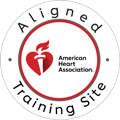The Crucial Role of CPR Ratios in Life-Saving Scenarios
In emergencies, every second counts, and mastering the rhythm of Cardiopulmonary Resuscitation (CPR) can make the difference between life and death. Understanding and implementing the correct compression-to-ventilation ratios during CPR is critical for effectively resuscitating a person in distress. This article delves into the essential CPR ratios, their significance, and the best practices for training to ensure these techniques are applied correctly in life-saving scenarios.
CPR, a lifesaving technique used in emergencies when someone’s heartbeat or breathing has stopped, involves a combination of chest compressions and rescue breaths. The effectiveness of CPR depends heavily on adhering to the correct compression-to-ventilation ratios. These ratios are designed to maximize blood flow to the brain and heart while minimizing interruptions in compressions. Proper execution of these ratios significantly enhances the chances of survival and reduces the risk of brain damage or other complications.
To grasp the importance of CPR ratios, it is essential to understand what they entail. The compression-to-ventilation ratio refers to the proportion of chest compressions to rescue breaths administered during CPR. For adults, the recommended ratio is 30 chest compressions followed by 2 rescue breaths. This sequence is crucial because it ensures continuous circulation of blood and adequate oxygenation, addressing the critical needs of a person in cardiac arrest. For children and infants, the ratios vary slightly. In child CPR, the ratio remains 30:2 for a single rescuer, but it changes to 15:2 when two rescuers are present. Infant CPR follows a similar pattern, with a 30:2 ratio for a single rescuer and 15:2 for two rescuers. These variations are tailored to the physiological differences between adults, children, and infants, ensuring that the CPR technique is appropriately adapted for each age group.

Call Us Now
Get the Best CPR Class in Tampa Today!
Basic Life Support (BLS) for Healthcare Providers
Basic Life Support (BLS) for healthcare providers encompasses a broader scope of skills and knowledge compared to standard CPR. BLS training includes CPR techniques, as well as additional skills like using an Automated External Defibrillator (AED) and managing choking emergencies. In BLS, the compression-to-ventilation ratios are the same as those used in standard CPR but are practiced with a higher emphasis on precision and efficiency. Healthcare providers are trained to perform CPR with optimal depth and rate of compressions and to deliver rescue breaths effectively. BLS training often involves hands-on practice with manikins and scenario-based simulations, allowing providers to refine their techniques and become more proficient in applying the correct ratios under pressure.
Advanced Cardiac Life Support (ACLS) and Pediatric Advanced Life Support (PALS)
Advanced Cardiac Life Support (ACLS) and Pediatric Advanced Life Support (PALS) take CPR to a more advanced level. ACLS involves complex decision-making and interventions, such as the use of medications and advanced airway management. In ACLS, maintaining correct CPR ratios is crucial during resuscitation efforts, as these ratios need to be adjusted dynamically based on the patient’s response and the interventions being performed. PALS, on the other hand, focuses on pediatric patients and includes specific techniques and ratios tailored for children. The emphasis in PALS is on adapting the standard CPR ratios to the needs of younger patients, considering their smaller size and different physiological responses.
Hands-On Training Techniques
Hands-on practice is indispensable for mastering CPR ratios. Repeatedly performing CPR in a realistic setting helps reinforce muscle memory and improve response times. Simulated scenarios, where practitioners experience high-stress situations in a controlled environment, are particularly effective in honing these skills. These simulations provide a lifelike experience, allowing trainees to practice maintaining correct ratios while managing the stress and urgency of real-life emergencies. Feedback mechanisms, such as real-time coaching and performance metrics from CPR manikins, further enhance training by providing immediate insights into areas for improvement.
Stress-Free Learning Environment
Creating a stress-free learning environment is vital for effective CPR training. A comfortable, supportive atmosphere allows learners to focus on mastering the techniques without added pressure. CPR Classes Tampa is designed with this principle in mind, offering hands-on, engaging sessions that emphasize both learning and comfort. Testimonials from previous students often highlight the positive impact of such an environment, noting how it contributes to a more effective and enjoyable learning experience.
Renewal and Continuing Education
Regular renewal of CPR skills is essential to keep them sharp and up-to-date. As medical guidelines and practices evolve, ongoing education ensures that practitioners remain current with the latest techniques and protocols. CPR Classes in Tampa offer renewal courses for Basic Life Support (BLS), Advanced Cardiac Life Support (ACLS), Pediatric Advanced Life Support (PALS), and other certifications. Continuous training not only reinforces existing skills but also prepares individuals for the latest advancements in emergency care, ensuring they are ready to act effectively in any situation.
Why Choose CPR Classes in Tampa
Choosing CPR Classes Tampa provides several advantages. These classes are certified by the American Heart Association (AHA), ensuring that they adhere to the highest standards of training and quality. The comprehensive course offerings cover initial certifications and renewals across various CPR and first aid disciplines, making it a convenient and reliable choice for individuals and organizations alike. Additionally, the hands-on, stress-free classes are tailored to provide the best training experience, equipping participants with the skills and confidence needed to perform CPR effectively.
Conclusion
Mastering CPR ratios is a critical component of effective life-saving techniques. By understanding the importance of correct compression-to-ventilation ratios, participating in comprehensive training programs, and continually renewing skills, individuals can be better prepared to respond to emergencies and make a significant difference in saving lives. Enrolling in CPR Classes Tampa is a proactive step towards becoming proficient in these life-saving techniques and ensuring readiness for any situation. Proper CPR training not only enhances personal preparedness but also contributes to the broader goal of improving emergency care and outcomes in the community.


